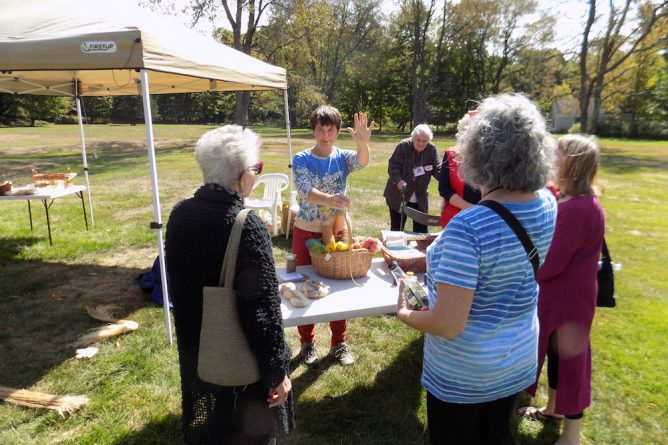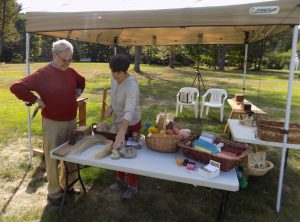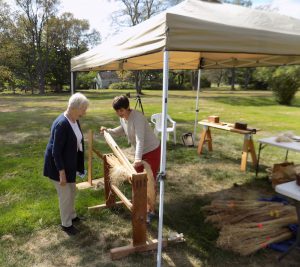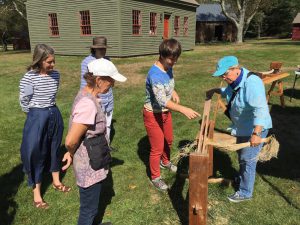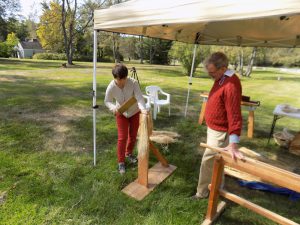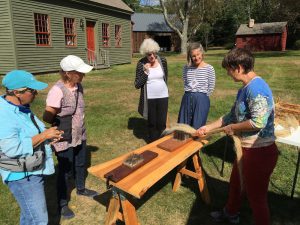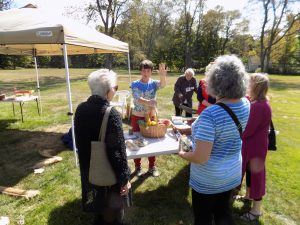On Sunday July 30th I will be doing a flax processing demonstration at the Blueberry Festival at Old Austerlitz in Austerlitz, New York. I’ll be there from 9-4. Admission is $7 for adults, and children under 12 get in free. There will be lots of demonstrations and vendors, including an area dedicated to natural fibers with fiber farmers, weavers, feltmakers, etc.. Two fellow flax-enthusiasts will be there, Emily Gwynn from Hands to Work Textiles and Jill Horton-Lyons from Winterberry Farm. Stop by if you are in the neighborhood!
I haven’t been to the Blueberry Festival before, but I have been to Old Austerlitz. On September 17, 2016 I did a similar flax processing demo for their event Intersection Austerlitz. It was very fun and I met a lot of interesting people.
Here are some photos of my set-up last fall. I will have a similar display this Sunday with the same set of tools, which I own collectively with the other members of the New England Flax and Linen Study Group.
Here’s one of my display tables. In the photo below, I’m pointing to two commercially produced sticks of flax, one of which was dew-retted and the other water-retted. Retting is the decomposition process that separates the fibers from the rest of the flax stalk. Dew-retting produces a silvery gray color. Water-retting produces a pale yellow or cream color. The u-shaped bundle of fiber in front of me is some of my own home-grown and hand-processed flax (also water-retted).
Here I am demonstrating how to use a flax brake. The brake smashes up the woody material in the stalks and loosens the fibers. We are both smiling because breaking flax is really fun!
One of the reasons I enjoy doing flax processing demonstrations is that people are always so thrilled and excited to watch all the steps and to have the opportunity to try the tools.
Below I am showing the scutching board and scutching knife. Scutching (or swingling) removes more of the woody pieces and opens up the fibers.
Here I am hetcheling (or hackling or hatcheling). This step separates the short fibers from the long fibers, and aligns all the fibers in the same direction. The short fibers are called tow and the long fibers are called line.
Below, I’m showing the difference between tow and line. I’m holding some tow (well, it’s pretty long for tow, but short for line), while the long line fibers are draped over the hetchel:
And here I am showing what the ideal growth habit of a fiber flax plant looks like: a tall, straight stalk with no branches until the very top.
See you on Sunday at Old Austerlitz!

